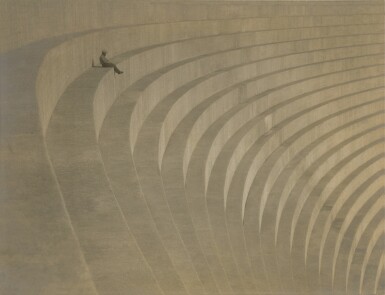Photographs
Photographs

Hiromu Kira
The Thinker
Lot Closed
April 5, 06:24 PM GMT
Estimate
8,000 - 12,000 USD
Lot Details
Description
Hiromu Kira
1898 - 1991
The Thinker
toned gelatin silver print, framed, circa 1930
image: 10 ¼ by 13 ⅜ in. (26 by 34 cm.)
frame: 17 ½ by 20 ½ in. (44.5 by 52.1 cm.)
Vanity Fair 36, No. 1 (March 1931), p. 42.
'Hiromu Kira, Still Life Photography,' Camera Craft, August 1928 (vol. XXXV, no. 8), p. 353.
Dennis Reed, Japanese Photography in America, 1920-1940 (Japanese American Cultural and Community Center, Los Angeles, 1985), pl. 64
Asian American Art: A History, 1850-1970, Stanford University Press, Stanford, California, 2008, p. 157, fig. 130.
Britt Salvesen, See the Light--Photography, Perception, Cognition: The Marjorie and Leonard Vernon Collection (Los Angeles County Museum of Art, 2013), p. 104
Prints of this image are scarce and only one other example is believed to have been offered at auction. Two prints have been located in institutional collections: the Marjorie and Leonard Vernon Collection at Los Angeles County Museum of Art, and the J. Paul Getty Museum.
Hiromu Kira was among a group of Japanese-American photographers on the West Coast of the United States who comprise a small but interesting chapter in the history of the medium. Organized loosely around the camera clubs in such cities as Los Angeles, San Francisco, and Seattle, they were influential both as photographers and collectors. Among the earliest buyers of Edward Weston's work, for instance, were members of the Japanese Camera Pictorialists of California, centered in Los Angeles's Japantown.
Kira came to America from Japan when he was a teenager and eventually settled in Seattle. In 1924, he helped to found Seattle's camera club, where he was a leading light in Pictorialist photography. A move to Los Angeles in 1926, and exposure to the photographs of Weston and others, coincided with a new direction in his work. The Thinker was made while Kira was working at T. Iwata's Camera shop in Little Tokyo in downtown Los Angeles. Kira and a customer went shooting together, stopping at the Hollywood Dam and making what would become Kira’s most memorable Modernist composition.
